 Earth Materials – Introduction to Mineralogy and Petrology (2nd Edn.)
Earth Materials – Introduction to Mineralogy and Petrology (2nd Edn.)
Weighing-in at over 600 pages, presented in large US ‘quarto’-style format with numerous colour photographs, figures and graphs, the second edition of this established textbook is a truly comprehensive introduction to mineralogy and petrology!
Arranged in 18 chapters, the volume guides the reader through the fundamentals of geology, rock-forming minerals and rock identification, before concentrating on the more detailed aspects of geology such as crystallography, microscopy and mineralogy. There are useful chapters on igneous, metamorphic and sedimentary rock-forming minerals, all presented with appropriate / diagnostic photographs and figures. The final few chapters discuss economic minerals, resource potential of geological materials, including geothermal energy, hazard assessment and minerals that have a detrimental effect on human health and welfare.
The volume contains a thorough glossary and several indexes for specific minerals and rocks (in addition to a general index). The volume also contains a chart for the estimation of mineral abundance via microscope examination (or hand specimen), and the periodic table of the elements. The second edition also features a completely new chapter providing an elementary introduction to thermodynamics, kinetics, radioactive decay and absolute dating. A new section is also included on hydraulic fracturing (‘fracking’) and discussion of some of its most serious potential environmental effects (primarily from a US perspective).
Each chapter ends with a concise summary of the learning aims, offers review questions and indicates useful online information sources and suggestions for further reading. PowerPoint slides and JPEGs of all figures from the volume are also made available online from the publishers. At the time of writing this review, these resources appear to be available only to academic staff / instructors.
The second edition has clearly been updated and revised based upon teaching / classroom experience and student feedback acquired by the authors.
In summary, the volume provides an excellent undergraduate overview of how mineralogy and petrology relate to planet Earth, its formation and modification by sedimentary, igneous and metamorphic processes. The addition of the new chapter about thermodynamics and kinetics underpins the thorough treatment of key concepts in petrology and mineralogy. An excellent revision to an established and authoritative text. An affordable and recommended read.
Reviewed by Mark Griffin
EARTH MATERIALS – INTRODUCTION TO MINERALOGY AND PETROLOGY (2nd Edn.) by CORNELIUS KLIEN AND ANTHONY PHILPOTTS. Cambridge University Press. 2017. ISBN 978-1-60885-967-2. Sbk. 616pp. List Price: £49.99. W: www.cambridge.org.uk.
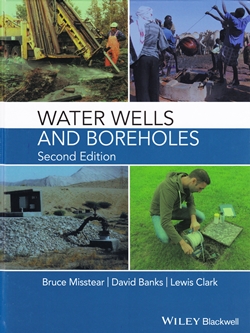 Water Wells and Boreholes (2nd Edn.)
Water Wells and Boreholes (2nd Edn.)
When the first edition came out it was a welcome addition to the hydrogeology library of books on water well drilling. This second edition has been revised and contains additional material that adds an extra 20 pages. As with the first edition, it puts the design and construction of boreholes in the context of the local hydrogeological conditions and goes further by including more information.
New material includes the design considerations for the use of groundwater and wells in heating and cooling schemes including the problems of re-injecting water that include minimizing mixing and other problems that can result. It also includes the dual rotary drilling rigs that have a conventional top drive system to operate the main drill string while a lower drive rotates an outer casing. The sonic method of drilling that was first established in 1913 has also been included and is now used mainly in unconsolidated formations. The section on geophysical logging now has been extended to include distributed (fibre optic) temperature sensing, a new technique for monitoring temperature in real-time in a number of environments that included boreholes as well as river, lakes and the soil.
Pumping tests on large diameter wells has been added where the problem of a large volume of water stored in the well is taken into account in the analytical equations. The use of geophysical logging during pumping tests is included showing methods of observing the precise movement of groundwater induced by pumping. The chapter on groundwater sampling includes the methods used to sample stable isotopes of oxygen-18, carbon-13, sulphur-34 and oxygen-18 within the sulphate ion. It also includes a new section on sampling dissolved gasses that are commonly carbon dioxide, methane, nitrogen, oxygen, inert gases such as argon and helium and chlorinate fluorocarbons (CFCs) and sulphur hexafluoride (SF6) that are both man-made and can be used for dating groundwater.
The existing chapter on Well and Borehole Records has been extended by an example of hydrogeological database using data from a network of boreholes in the Faryab province of Afghanistan. This book with its new content is recommended for all those working in well design and construction whether experienced practitioners or students.
Finally, this revised edition would have made Lewis Clark very pleased as it is based on his original book published in 1988. Those of us who knew and worked with Lewis are pleased that his influence in water well design and construction lives on through this book.
Reviewed by Rick Brassington
WATER WELLS AND BOREHOLES (2nd Edn.) by BRUCE MISSTEAR, DAVID BANKS & LEWIS CLARK 2017. Published by John Wiley & Sons 536 pp ISBN: 978-1-118-95170-5 List Price £65.00 hardback; £58.99 E-book ISBN: 978-1-118-95170-5 W: http://eu.wiley.com/WileyCDA/WileyTitle/productCd-1118951700.html
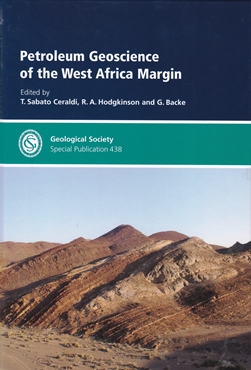 Petroleum Geoscience of the West Africa Margin
Petroleum Geoscience of the West Africa Margin
This new volume represents an excellent snapshot of the state of affairs in petroleum exploration across the entire margin of West Africa. It is well edited and the individual contributions are of a very high technical standard. It is the nature of Special Publications that they assume a considerable pre-knowledge of an area or subject, they are not introductory textbooks. As such, only certain elements will be useful to those seeking a primer to the area.
As with most of these volumes, the production started as a successful Burlington House conference. The subsequent oil industry downturn obviously had a strong impact on the conversion of conference presentations to published chapters. It is a shame, although understandable, that further authors couldn’t contribute as it would have been beneficial to see additional material on areas such as Nigeria and Guinea Bissau. Moreover, the topic focus is firmly on tectonics and exploration scale problems with the notable absence of production scale geology. The smaller set of papers also means that some geographical continuity is missing between, for example, Mauritania and Sierra Leone. The upside is that the smaller set of contributions maintain a very high standard and the editors should be highly praised for bringing together a set of papers for a successful publication in difficult circumstances.
The research presented is, considering the large area covered, broad ranging - from oddball lithofacies in Ghana to extensional structures in South Africa. Particular highlights are subjective but include an excellent integrated overview of the underpublished Douala Basin, Equatorial Guinea. An excellent summary of the link between the lacustrine deposits of the South Atlantic conjugate margins is also offered. Finally, an interesting take on Proterozoic petroleum plays in Mauritania demonstrates the broad range of risks and uncertainties involved in chasing such concepts. One small quibble is that the papers are printed in a different order to that suggested in the introduction. It is not clear if this was deliberate, but it does not detract seriously from the whole.
This volume gives an excellent feel for the zeitgeist in West African hydrocarbon exploration, which will be valuable as the industry gears up for the next cycle. Alongside extra supporting material, such as the online conference abstracts, this makes for a very useful resource.
Reviewed by Ben Kilhams
PETROLEUM GEOSCIENCE OF THE WEST AFRICA MARGIN edited by T SABATO-CERALDI, R A HODGKINSON AND G BACKE, 2017. Published by the Geological Society of London, ISBN: 9781786202437, List Price: £ 90.00, Fellows Price: £ 45.00, W: www.geolsoc.org.uk/SP438
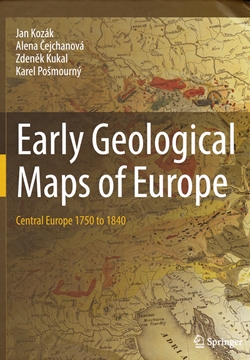 Early Geological Maps of Europe: Central Europe 1750 to 1840
Early Geological Maps of Europe: Central Europe 1750 to 1840
The conventional historical narrative of geological mapping as retold inside and outside of the Geological Society, typically begins with William Smith travelling the around England before producing his famous map in 1815. Convention rather skips over the many precursors to Smith. Here’s an attempt to redress the balance. Focusing on the lands to the north and east of the Alps, the authors have raided the libraries and archives of Central Europe for their treasures to produce this atlas of rarities.
The main portion of this book presents full-colour reproductions of the maps along with bibliographic descriptions and a paragraph of commentary outlining the importance of the map. This amounts to a rather glossy catalogue of 18th Century thematic mapping that could be considered to a modern viewer to be geological in nature. It would have been good to be able to see more detail on the images, however according with its price bracket, the book is only 29 x 21 cm in size, so for many of the maps displayed not even a magnifying glass is going to help you. The resolution of the image scans for the most part is sufficient for a book of this size with one or two suffering poor reproductions. The commentary limits itself to enhancing description rather than discussion in most cases.
The catalogue section is topped and tailed by summary essays of the geological setting of the area as well as some short discussion on the information the maps present in the context of this history of stratigraphic mapping, structural mapping and economic geological mapping. These overviews are aimed at a wide readership and thus only skim the surface of their subjects. It would have been good to have more depth to the bibliographies of the map-makers as well, although there are several well-known names represented here, there are also many less-storied cartographers I would have enjoyed discovering more about.
A laudable attempt to bring the early geological maps and mapmakers of Central Europe to wider attention let down by its format and by attempting to simultaneously please disparate audiences of geologists, historians, librarians, and collectors leading to rather simplistic overviews. Suitable as a reference work or as a starting point for research in this cartographic niche.
Reviewed by Paul Johnson
EARLY GEOLOGICAL MAPS OF EUROPE: CENTRAL EUROPE 1750 TO 1840 by JAN KOZÁK, ALENA ČEJCHANOVÁ, ZDENĚK KUKAL, AND KAREL POŠMOURNÝ. 2016 Published by: Springer Hbk. ISBN 978-3-319-22487-9 List Price: £32.00. eBook: £25.99. W: www.springer.com/gb/book/9783319224879
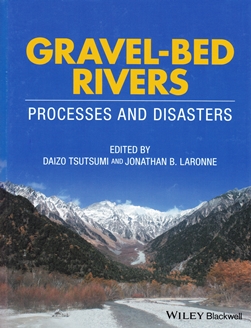 Gravel-Bed Rivers - Processes and Disasters
Gravel-Bed Rivers - Processes and Disasters
This weighty tome is not something you would pick to take on a journey, but if you are looking for some of the latest papers on what the gravel-bed research world is doing then this book is for you. It represents the outcome of the 8th International Gravel Bed Rivers Workshop in Kyoto, Japan and Takayama, held in September 2015.
The objective of the workshop was to present the latest progress in understanding the morphology and processes operating in gravel-bed rivers, with the key theme focusing on disasters arising from flooding in gravel bed rivers. Most research has been about what happens in bank-full conditions, but the real damage happens once gravel-bed rivers breach their banks. When this occurs the impact on our societies can be significant, and it can lead to many lost lives. The theme was particularly pertinent to the workshop being in Japan as more than half of all disaster related deaths in Japan over the 2010-2014 period occurred as a result of gravel-bed river-related events.
The book has 28 topic papers. Many deal with methods for modelling gravel-bed processes looking at the morphology found in rivers, and how flow conditions affect the grading and porosity in fluvial sediments. The effect that river bed morphology has on flow conditions forms the subject of some papers as well. So if you were needing to understand the complex modelling options available this book should satisfy many questions you might have.
However, there is more to the book than mathematical modelling papers. There are also case studies on lahar disasters from Indonesia, on reservoir sediment flushing and replenishment below dams in Japan, a review of geomorphic responses to dam removal in the USA and descriptions of catastrophic gravel deposition from outbreak floods. There are also papers looking at the ecological implications of intermittent flow in gravel-bed rivers and consideration of how vegetation and ‘large wood’ should be modelled to assess the effect on flow (and vice versa). It is interesting that there is nothing looking specifically at how climate change is likely to impact disasters related to gravel-bed rivers, as one might expect in this day and age. Last but not least, the book ends with a paper looking at fluvial gravels on Mars. I wonder what risk assessments for Martian field surveys would comprise!
Reviewed by James Montgomery
GRAVEL BED RIVERS - PROCESSES AND DISASTERS, by DAIZO TSUTSUMI & JONATHAN B LARONNE (eds) 2017. Published by: Wiley Blackwell. 783pp. ISBN 9781118971406 List Price: £150 (hbk) E-book: £135 W: www.wiley-blackwell.com
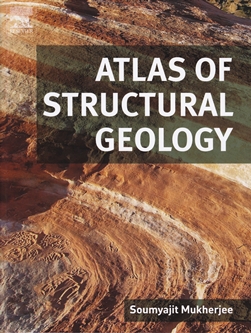 Tectonics of the Himalaya
Tectonics of the Himalaya
This book arises out of the 29th Himalayan-Karakoram-Tibet workshop held in Lucca, Italy in September 2014. It contains 13 papers that range from geophysics through structural geology to aspects of metamorphic and magmatic petrology and then to geochronology. All the papers are scientifically strong. I enjoyed reading them and learned much. There are many colour illustrations including maps, cross sections, field photographs, micrographs and data plots. As with any GSL Special Publication the production is excellent.
Having said that, I have two philosophical issues with this volume. Before addressing these I must register an interest as co-editor of two previous GSL Special Publication on the Himalaya: Himalayan Tectonics (vol 74, 1993) and Tectonics of the Nanga Parbat Syntaxis and the Western Himalaya (SP #170, 2000). The former contained some 45 papers and covered the full range of orogenic processes. I am pleased to see that five of the 13 papers included in the new book reference at least one paper from volume 74, which more than 20 years on cannot be bad.
My first issue is that the title of the book is misleading. It is merely a collection of papers from a small conference, none of which directly deal with the 'Tectonics of the Himalaya'. The Introductory chapter fails to draw them together into a connected narrative. The result is that this volume contains a set of loosely linked papers which could have been published individually elsewhere, maybe to greater effect.
The second issue relates to the cottage industry that the annual Himalayan-Karakoram-Tibet workshop has now become. The first one was held in Leicester in 1985. At that time Himalaya geology was new, unexplored and exciting. It might still be the latter, but with time it has become more detailed and location specific. Thomas Kuhn would argue that Himalayan geologists are moving into a period of 'ordinary science' so, other than inspiring young geologists from Himalayan countries, why do we still run these meetings in expensive locations such as the UK, USA, Japan etc.?
Sadly, due to the lack of context, I do not find this book to add greatly to our understanding of the Himalayan orogen despite the obvious quality of the individual papers. There may be a message here to future editors of GSL Special Publications because, even as a Himalayan geologist, I see no imperative to buy this book, other than the title, and would find it difficult to put a 'buy' flag on it.
Reviewed by Peter Treolar.
Editor’s note: This book was reviewed online in 2016.
TECTONICS OF THE HIMALAYA by S MUKHERJEE, R CAROSI, P A VAN DER BEEK, B K MUKHERJEE AND D M ROBINSON (eds) Published by: Geological Society of London SP412. 323pp (hbk) ISBN: 978-1-86239-703-3 List Price: £100.00. Fellows’ Price: £50.00. W: www.geolsoc.org.uk/SP412